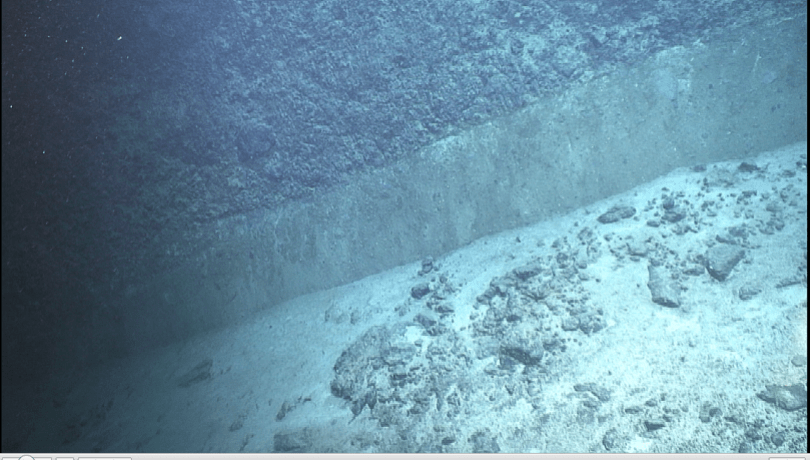Findings, detailed in a study led by ICM-CSIC, are key to understanding how active faults form and evolve, with important implications for assessing hidden seismic hazards in this region of the western Mediterranean.

A team from the Institute of Marine Sciences (ICM-CSIC) has led a pioneering study, published in Tectonics, that identifies and describes in unprecedented detail an incipient fault system in the Alboran Sea, located between southern Iberia and northern Africa. The discovery provides new insights into how active faults are born and evolve and has relevant implications for understanding hidden seismic hazard in the western Mediterranean.
The paper, titled “Characterizing an Incipient Fault System: Insights From the Morphometric Analysis of the North‐South Faults (Alboran Sea)”, analyzes the structure and morphology of a set of submarine scarps located about 60 km southwest of Almería, associated with the North-South Fault System, which is still in its early stages of evolution. Using high-resolution bathymetric data acquired with an autonomous underwater vehicle (AUV), along with its geomorphological and structural analysis, the team reconstructed the first stages of fault growth—a process rarely observed in marine settings.
A natural laboratory
The Alboran Sea is a tectonically complex region where the Eurasian and African plates interact. Although its seismic activity is moderate, the area shows clear signs of active deformation. According to the study, the ICM-CSIC team identified small submarine scarps, structural alignments, and local deformations on the seafloor, suggesting the presence of a tectonic system in the first stages of their formation and evolution.
“It’s like observing the moment when an area begins to deform and, over time, becomes a fault capable of generating large earthquakes that could cause damage to nearby regions,” explains Ariadna Canari (ICM-CSIC), lead author of the study.
“This phase is extremely difficult to detect, since geological processes occur over thousands to millions of years. That’s why this work provides key information about how faults grow and become organize within the Earth’s crust.”
To achieve this level of precision, the team has used very high-resolution data.
“The AUV data allowed us to perform a morphotectonic analysis of the seafloor with meter-scale resolution—exceptional in marine environments and comparable to terrestrial topographic studies,” notes Sara Martínez-Loriente (ICM-CSIC), co-author of the study. “It’s a powerful tool for investigating active fault systems in areas where direct observations are impossible.”
The results show that the fault is not yet fully developed but already exhibits signs of activity. According to the research, this system may have been responsible for the 1910 earthquake, which caused damage in the town of Adra (Almería) and was felt across south-eastern Spain.
Furthermore, the data reveal the direction of tectonic stresses and the possible future evolution of the system, which could eventually play a significant role in the tectonics of the Alboran Sea if it becomes connected, as the scientists suggest, to the Al-Idrissi Fault—the source of the 2016 magnitude 6.4 earthquake that caused considerable damage in northern Morocco.
Hidden hazards and implications for management
Although the Alboran Sea is not generally considered a high-risk seismic area, the discovery of this nascent fault system indicates that previously unidentified seismic sources may exist. As Hector Perea (ICM-CSIC), co-author of the study, points out:
“Many coastal regions characterized by slow deformation, such as the western Mediterranean or the Alboran Sea, are regarded as safe because there is no evidence of major earthquakes in the historical or instrumental record. However, such areas may host unknown faults capable of generating large earthquakes—potentially exceeding magnitude 6—every few thousand years, as could be the case with the North-South faults.”
Therefore, the researcher adds, “identifying their presence and determining their seismic characteristics can substantially improve our assessment of seismic hazard, including the potential generation of associated tsunamis.”
These findings underscore the need to continue geological research in the Alboran Sea and to integrate such data into seismic risk management and coastal planning strategies. “Understanding how active faults grow and interact is essential to anticipate possible scenarios and improve risk prevention strategies,” Canari emphasizes.
Overall, the team highlights the importance of combining, as in this study, disciplines such as marine geology, geophysics, and geomorphology, and embedding the results within geodynamic frameworks to better understand how major fault systems grow and the earthquakes they may generate. This multidisciplinary approach, they note, could be applied to other underexplored marine regions worldwide, such as the southern California continental margin or the Caribbean Sea.
“The results not only deepen our understanding of Mediterranean geodynamics but also remind us to look beneath the surface—to recognize that slow yet persistent processes are constantly reshaping our planet, and that we must learn to coexist with them in an informed and safe way,” the researchers conclude.